Roman house
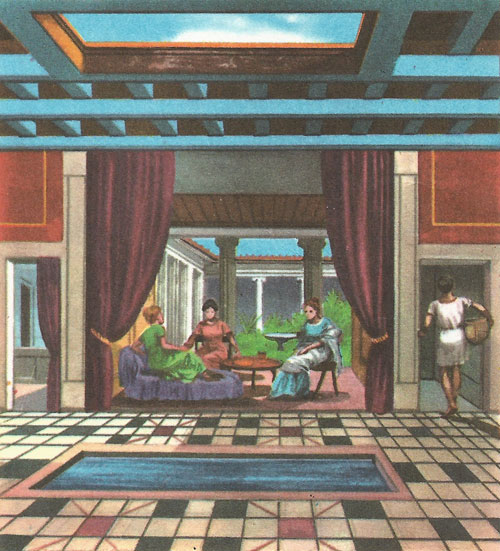
Figure 1. Inside a wealthy Roman's house; from the atrium with its impluvium we can see the tablinum and peristylium.
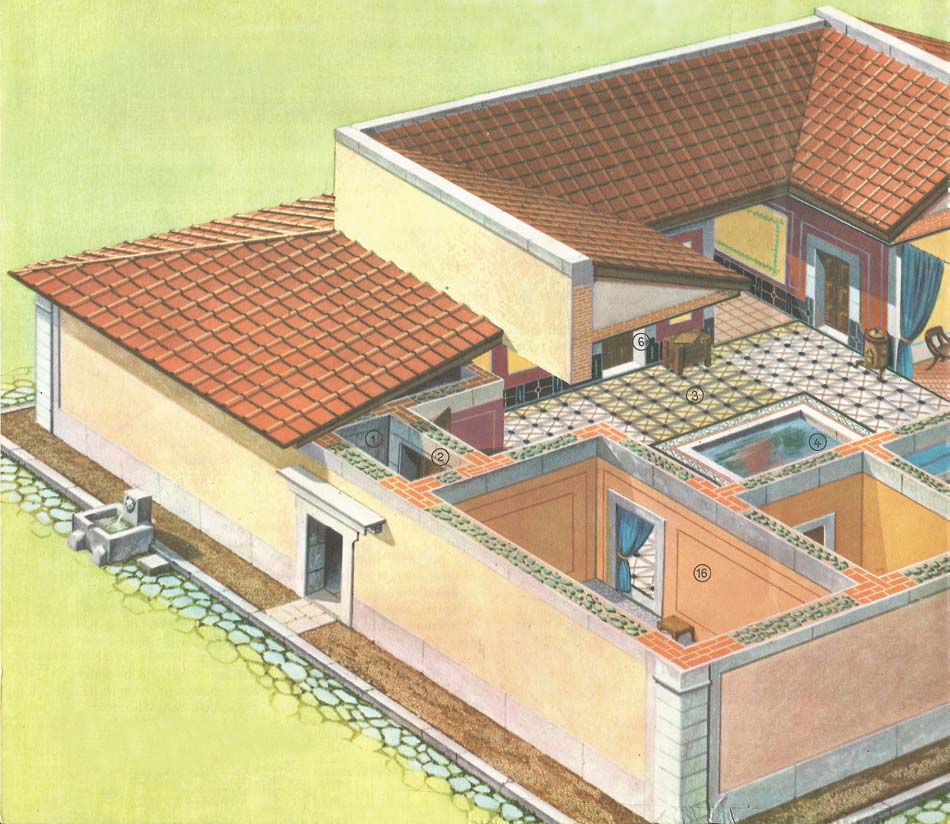
Figure 2. Reconstruction of a typical Roman domus. Left side. (N.b. Part of the roof has been removed to reveal the interior.)
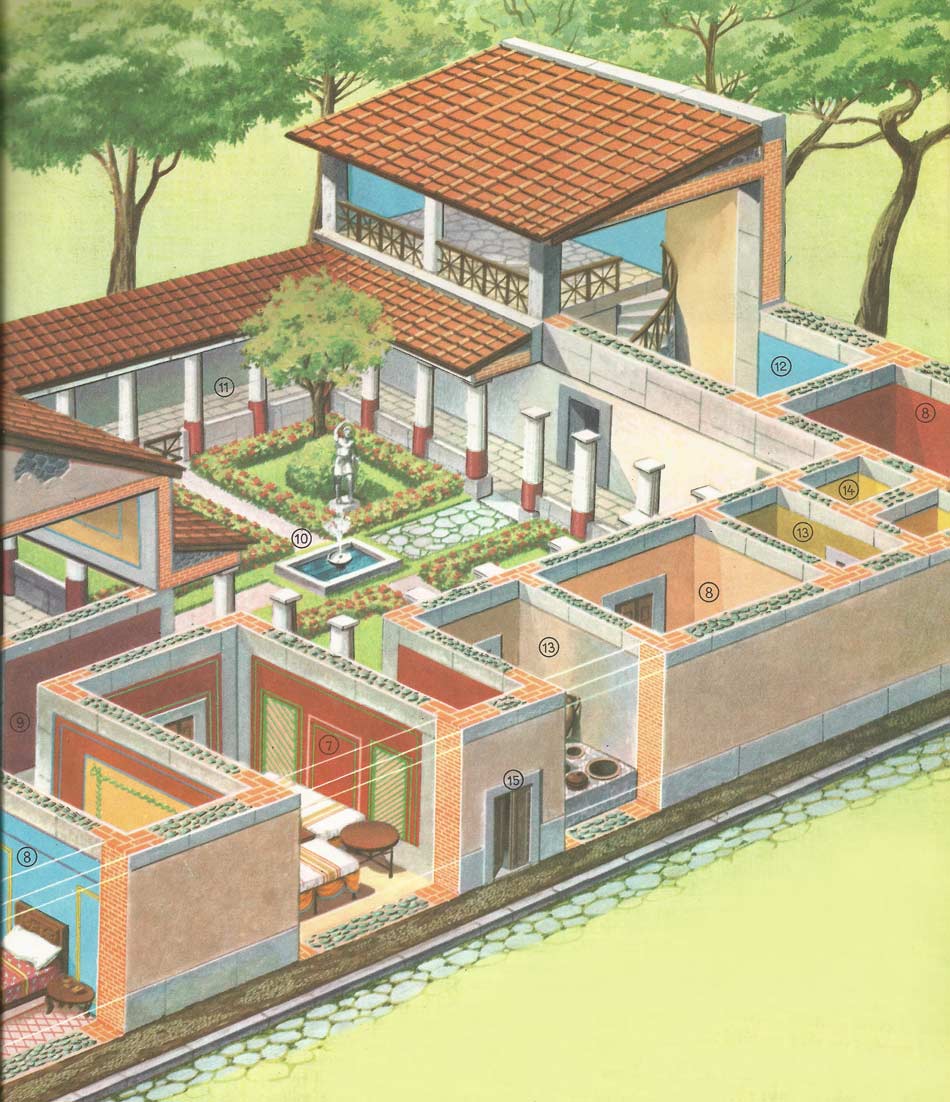
Figure 3. Reconstruction of a typical Roman domus. Right side. 1 Vestibulum; 2 Door (halfway along the entrance hall) ; 3 Atrium; 4 Impluvium; 5 Tablinum (reception room); 6 Library; 7 Triclinium (dining-room); 8 Bedrooms; 9 Andron (corridor leading to peristylium); 10 Peristylium; 11 Portico; 12 Exedra (drawing-room); 13 Kitchen and pantry; 14 Lavatory; 15 Posticum (side entrance, leading to peristylium); 16 Room for the slave who acted as porter
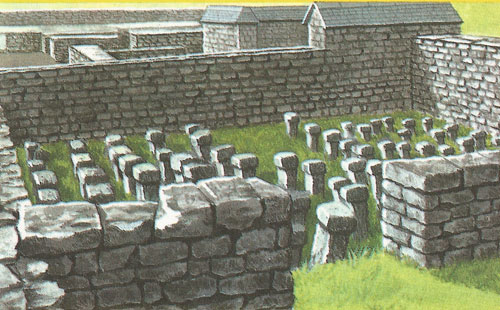
Figure 4. Hypocaust pillars in the Roman villa at Chedworth, near Cirencester
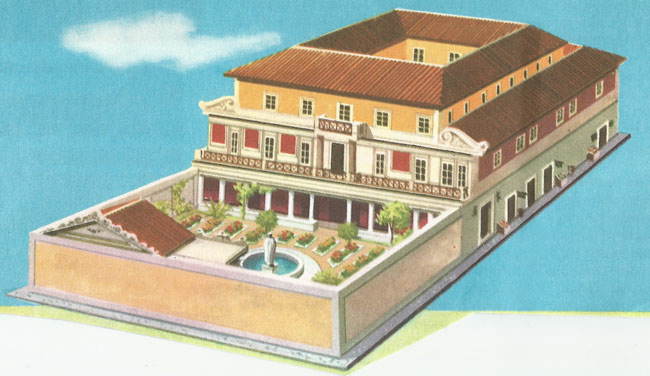
Figure 5. A fine domus at Pompeii.
Some well-built insulae survive to this day in the ruins of Ancient Ostia. Built of the thin, deep-red bricks that are still used in central Italy, they rose to a height of three or four storeys, often with projecting balconies. Still visible are the separate sets of stairways which made various apartments independent of each other (see Figure 1).
But in Rome itself, insulae were only too often roughly built to dangerous heights by speculative builders. (As a safety measure, the Emperor Augustus limited the height of buildings to 70 feet). Fire was always a very real danger: The huge fire in Nero's reign was by no means the only one. It is not surprising that all Romans who could afford it preferred to live in a domus (private house) of the Pompeian type. Even so, we know that in about AD 350 there were fewer than 1,800 domus in Rome, compared to over 44,000 insulae.
The traditional Roman house, or 'domus'
The earliest type of Roman house consisted of a single-roomed hut, with a hole in the roof to let out the smoke from the fire. Because it became black (ater) with smoke, it was called the atrium. The Romans' intense conservatism made this the basis of even the most magnificent domus; it was to the atrium that the other rooms were added. Of course the rain came in through the hole in the roof (compluvium), so a small basin (impluvium), perhaps about 3 feet square and 6 inches deep, was set in the floor beneath it.
Beyond the atrium, and separated from it only by curtains, was the tablinum (reception room). The triclinium (dining-room) was often level with this room, and was separated from it by the andron, a short passage leading to the peristylium. This was a formal garden, partly or entirely surrounded by rows of columns, and embellished with statues or a fountain. It often also had a 'back entrance' (posticum) directly from the street.
In Figures 2 and 3 is a reconstruction of a Roman domus (shown here in two parts, left side and right). As can be seen, it faced inwards; the outer walls were blank with few if any windows. This is not surprising as Rome had no police force until the time of Augustus. The inner walls were covered with painted patterns and lifelike murals. Floors were uncarpeted, but decorated with murals.
Roman houses in Britain
Figure 4 gives some impression of the difference in climate between Italy and Britain. It is not surprising that hypocausts (the Roman system of central heating) were more usual in Britain than in Italy. The floors of the principal rooms were supported on small square pillars (pilae). Hot air from an outside furnace circulated under the floor, and rose through hollow tiles in the walls to warm the rooms. Houses in the towns of Roman Britain were not otherwise different from Roman houses elsewhere. But in the country, the typical Roman house was the villa. This was a self-contained country house, complete with farm buildings and outhouses, and surrounded by a wall or a ditch. The larger villas usually had a suite of baths attached: being out of town, there were no lavish public baths nearby, as there were in Rome or Pompeii.
Roman villas in Britain were generally more open in plan than houses in Italy. This was to aviod shutting out the sun. They varied considerably in size: many have been recognized from the discovery of wonderful mosaic pavements.
A fine 'domus' at Pompeii
Figure 5 shows a reconstruction of a particularly fine Roman private house at Pompeii. It occupied a complete block. In the foreground is the garden. Rooms used by the owner were in the central part only. At the sides were small shops, each with its own entrance from the street. On the higher floors were the living-rooms attached to the shops.
